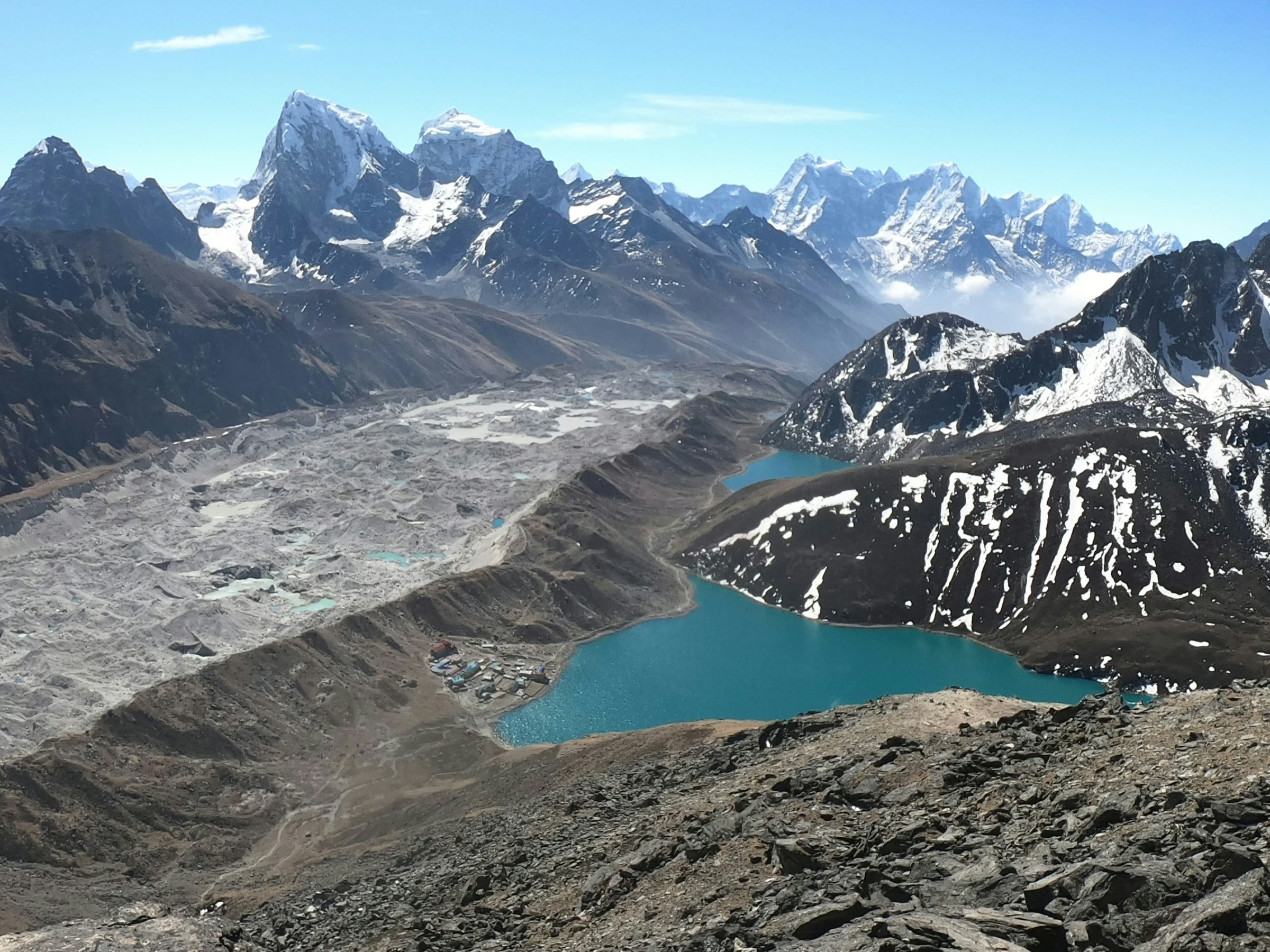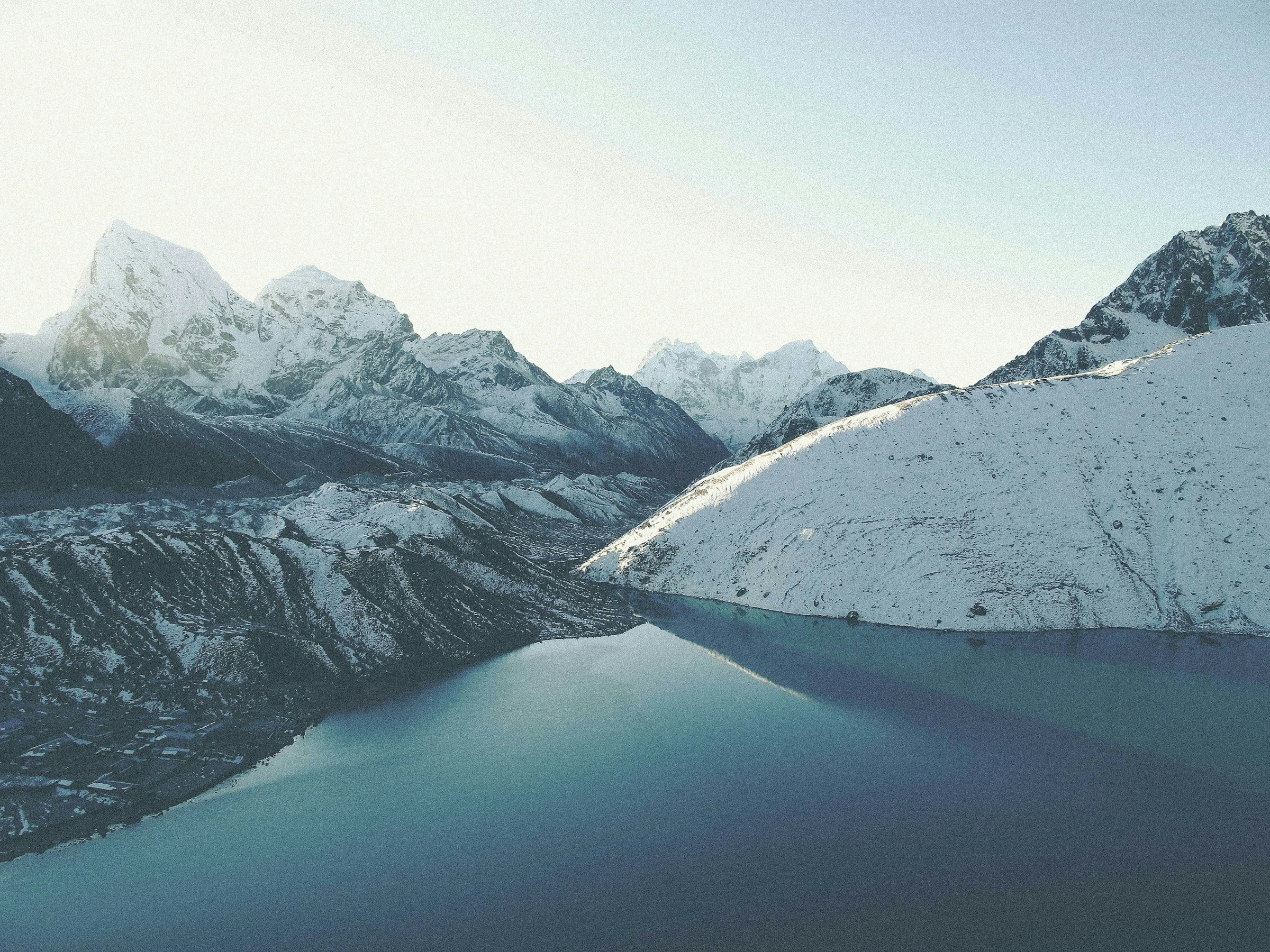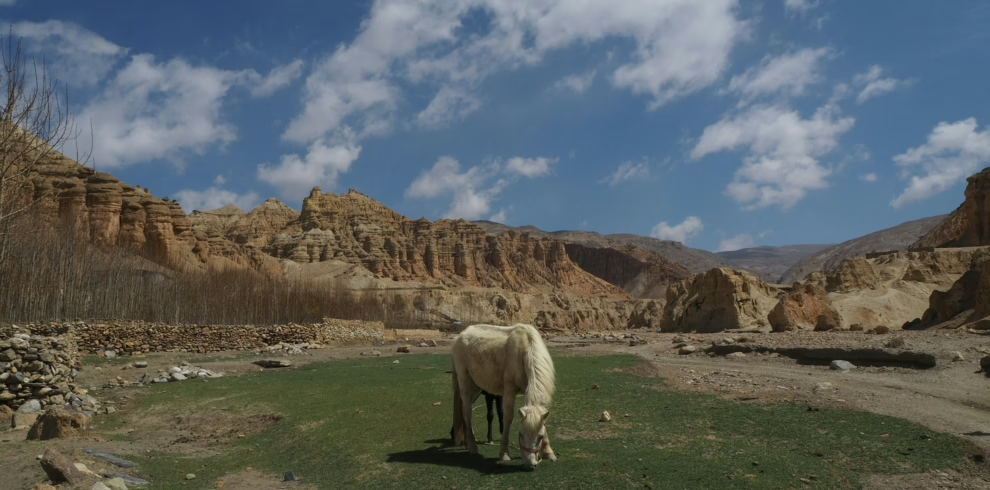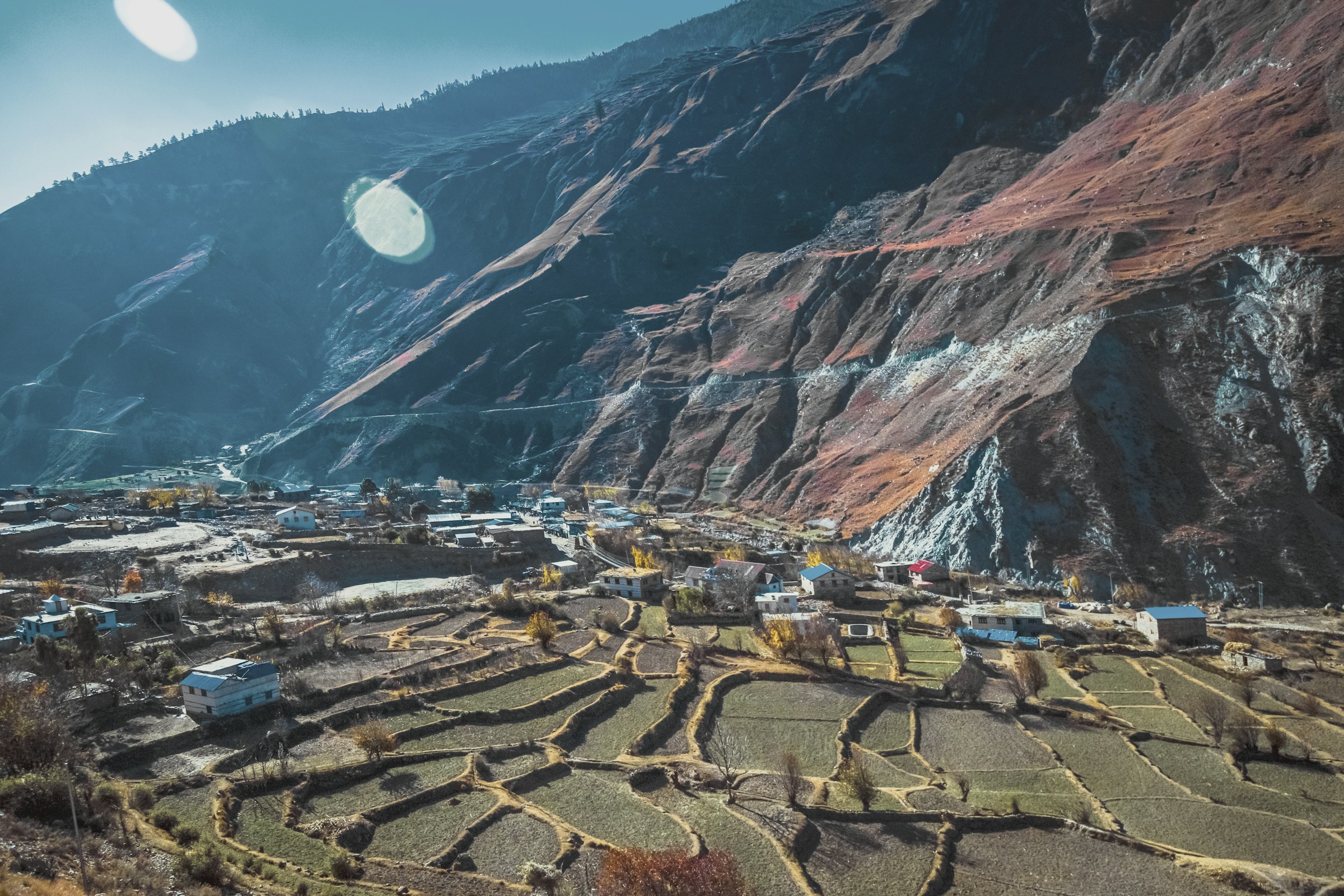Embark on an unforgettable adventure with the Gokyo Chola Pass Trek via EBC, a challenging yet incredibly rewarding journey through some of the most awe-inspiring landscapes in the Everest Region. This trek will lead you across the Khumbu Glacier, the largest glacier in the Himalayas, and offer you a rare chance to witness the raw power and beauty of nature firsthand. Along the way, you’ll also encounter the breathtaking Ngozumpa Glacier, the biggest in the Nepalese Himalayas, adding to the trek’s allure.
One of the standout features of this trek is crossing the challenging Chola Pass. At 5,420 meters, the pass rewards trekkers with panoramic views of the majestic Himalayas. While crossing the pass requires a solid level of fitness and prior trekking experience, the spectacular vistas and sense of achievement make every step worth it. Of course, Everest Base Camp (EBC), the iconic destination for trekkers and climbers aiming for the summit of Mount Everest, is a key highlight of this adventure.
This trek is not for the faint of heart; it demands endurance, fitness, and preparation. However, the reward is one of the most extraordinary experiences you’ll ever have. You’ll traverse some of the world’s most stunning scenery and conquer one of the Himalayas’ most challenging crossings.
The best times to tackle the Gokyo Chola Pass Trek via EBC are from September to November and March to May, when clear skies and pleasant temperatures make for ideal trekking conditions. For a smoother experience, it’s highly recommended to hire a local guide and porter. Their knowledge of the region and logistical support will make your journey more enjoyable and insightful.
17 days / 16 nights Gokyo Chola Pass trip
Journey Within the Everest Region
Highlights
- Enjoy a scenic flight from Kathmandu to Lukla, following in the footsteps of Tenzing and Hillary to Everest Base Camp and Kala Patthar.
- Experience stunning views of rolling hills, charming villages, and lush meadows.
- Explore Buddhist temples and immerse yourself in the unique Sherpa culture and customs.
- Discover wildlife and birdlife in Sagarmatha National Park.
- Visit the historic Tengboche Monastery, the largest and oldest in the region, and offer prayers.
- Witness breathtaking close-up views of snow-capped peaks, icefalls, and rugged slopes, along with ancient Chortens, Gompas, colorful Mani walls, and prayer wheels.
- After admiring views from Kala Patthar and Gokyo Peak, explore Gokyo Lakes and the Ngozumpa Glacier.
- Trek iconic locations like Everest Base Camp, Kala Patthar, Cho La Pass, Gokyo Lake, and Gokyo Ri.
- Enjoy tranquil walks through the lush trails of Sagarmatha National Park and Gokyo Valley.
Itinerary
Upon your arrival at Tribhuvan International Airport, our representative will greet you and transfer you to your hotel in a private tourist vehicle. Once you're settled at the hotel, we will schedule a trip briefing at the hotel lobby or restaurant.
Your Gokyo Cho La Pass Trekking via EBC begins with tourist bus ride from Kathmandu to Ramechaap where you will take 30- to 40-minute flight to Lukla, offering stunning views of the Annapurna and Langtang mountain ranges. From Lukla, you'll trek towards the Thado Koshi River, crossing several suspension bridges. After an easy hour-long descent, you'll reach Chheplung village, where you can see Mt. Khumbila (5,761 m), a sacred mountain never climbed. As you adjust, the journey becomes more comfortable. From Chheplung, you'll continue to Phakding, where you can visit the Pemacholing and Rimishung Monasteries.
After breakfast in Phakding, you’ll continue your trek, experiencing both uphill and downhill terrain along with several river crossings. From Bengkar village, enjoy breathtaking views of Mt. Thamserku (6,608 m). You’ll pass through Monjo Village, dense forests, and rugged trails before reaching the entrance to Sagarmatha National Park. After registering your permits, you’ll enter the park and catch your first glimpse of Mount Everest. Continuing past Jorsale village, you’ll cross the Hillary Suspension Bridge and head to Namche Bazaar, where you can enjoy stunning views of Everest, Lhotse, and Tawache.
Take a rest and acclimatize in Namche before continuing your EBC Trek with Gokyo Chola Pass. Namche Bazaar is a lively town in the Khumbu region, offering various conveniences like bakeries, restaurants, ATMs, and internet cafés. You can visit nearby viewpoints such as Thame or Khunde, or explore the Tourist Visitor Center to learn about Everest climbers, Sherpas, and their traditions. The Everest View Hotel is also accessible by trek, offering stunning views of Everest, Ama Dablam, Lhotse, Nuptse, Cho-Oyu, Thamserku, and more. After exploring, return to Namche for the evening, passing by a museum, gallery, and several Sherpa villages along the way.
After breakfast in Namche, your EBC Trek with Gokyo Cho La Pass will continue toward Tangboche. Along the way, enjoy views of Mt. Everest, Nuptse, Ama Dablam, and Thamserku. The trail offers sightings of wildlife, including musk deer, Himalayan Thar, and colorful pheasants, as you follow a smooth, occasionally winding path. After passing through a pine forest, you'll cross a prayer flag-adorned bridge over the Dudh Koshi River. A short hike will bring you to Phungi Thanga, a small settlement with teahouses and an army outpost nestled in an alpine forest. You’ll also have the chance to visit the Tengboche Monastery and witness a religious ceremony performed by the monks.
Tengboche offers a stunning sunrise view of the surrounding mountains, including Kangtega, Thamserku, Ama Dablam, Taboche, Kwangde, Lhotse, and Nuptse. Your EBC Trek with Gokyo Cho La Pass begins with a hike along Imja Khola, descending through birch and rhododendron forests to the riverbed. On the way to Pangboche, enjoy breathtaking views of the Himalayas, stopping at the Buddhist nunnery in Deboche and passing several chortens. As you continue to Pangboche and then to the arid, mountainous Shomare, you’ll notice the vegetation thinning. From Orsho, you may catch a glimpse of Mt. Pumori’s peak before reaching Dingboche, a cold and windy village where you'll spend the night.
Today is your second acclimatization day on the 14-day EBC trek itinerary, essential for adjusting to the higher altitude. Take time to rest and prepare for the final leg of your adventure, while enjoying spectacular views. You can explore Dingboche and nearby villages like Chhukung and Imja, or simply relax. Short hikes are available, including to Nagarjun Hill (2,128m) and Chhukung Ri (5,546m). From the top of Nagarjun Hill, you’ll enjoy views of Mt. Makalu, Mt. Lobuche, Thamserku, Ama Dablam, and other peaks.
The first leg of the Gokyo Chola Pass via EBC Trek takes you through the Khumbu Khola valley to Duglha. As you approach Dusa, the valley narrows, and the path becomes more challenging, with large rocks and steep mountains. Along the way, you’ll pass monuments adorned with prayer flags and stones, memorializing climbers who lost their lives attempting Mount Everest. The route to Gokyo Lakes and Cho-La Pass becomes visible, along with peaks like Khumbuste (6,636m), Lingtren (6,749m), and Pumori (7,161m). The hike to Lobuche, across the hilly terrain, can be tiring. Note that there are few tea houses in Lobuche for overnight stays.
After breakfast in Lobuche, you’ll walk to Gorakshep, a 2-3 hour trek. Today is the highlight of your 16-day Gokyo Cho La Pass via EBC Trek, as you'll reach Everest Base Camp. Enjoy lunch in Gorakshep before beginning your 3-4 hour journey to Base Camp. Once there, take in the stunning views of Nuptse, Khumbuste, and Pumori. After exploring, return to Gorakshep for the night.
The first stage of your Gokyo Cho La Pass Trek via EBC ends with a hike to Kalapatthar for a breathtaking sunrise view. After a few hours, you'll reach Kalapatthar, where you can enjoy a 360-degree panorama of Everest, Lhotse, Nuptse, Pumori, Ama Dablam, Khangtenga, Lobuche Peak, Everest Base Camp, Khumbu Glacier, and Icefalls. Capture this unforgettable sight with photos and memories. Afterward, return to Gorakshep, collect your belongings, and head back to Lobuche. Finally, continue to Dzongla along a scenic path.
Wake up early to witness the stunning view of Cholatse. The toughest part of the Gokyo Cho La Pass Trek begins after passing through Dzongla and descending into a basin surrounded by wooded spurs. As you climb back up, you'll be rewarded with breathtaking views of Chola Lake and Mt. Ama Dablam. The rocky ascent leads to the challenging Bergschrund trails. From the summit, enjoy panoramic views framed by prayer flags. The descent to Thagnak is relatively easy, unless ice-covered rocks make the path slippery and dangerous. You'll spend the night in Thagnak.
To continue the EBC Trek with Gokyo Chola Pass, depart early in the morning from the small village. As you approach the far side of the Ngozumpa Glacier, you may catch a glimpse of the second Gokyo Lake, part of the six-lake series. The Gokyo village is located near the third lake, close to the second.
The Gokyo Chola Pass Trek via EBC descends from Gokyo, crossing the Ngozumpa Glacier before reaching the Dudh Koshi River. The short walk passes the first and second lakes, offering stunning views of peaks like Cholatse, Taboche, and others. Continuing to Machhermo, you'll be treated to breathtaking vistas of Cho Oyu, Kangtega, and Thamserku. The trail then descends through the villages of Luza and Lhafarma, leading to Dole for the night.
Today's Gokyo Cho La Pass Trek via EBC starts in Dole and ends in Namche Bazaar. The trail descends, revealing more diverse plants and wildlife. You'll pass through Phortse Thanga, Mong La, and then enjoy a moderate descent to Namche. As you walk, you'll say goodbye to views of Mount Khumbila, Taboche, Thamserku, Ama Dablam, Everest, and Tengboche. The night will be spent in a tea house in Namche.
The final day of the Gokyo Cho La Pass Trek via EBC involves a steep descent. Hikers must navigate the rocky, challenging terrain carefully and slowly to reach the suspension bridge over the Dudh Koshi. The trail passes through an open plain and rhododendron forest, offering views of distant snow-capped peaks. After passing through villages like Jorsalle, Monjo, Phakding, and Chheplung, you'll arrive in Lukla, where you’ll spend the night in a teahouse.
On this day, you’ll leave the Everest region. Enjoy a tour of Lukla before having a hearty breakfast. Your EBC Trek with Gokyo Chola Pass ends as you catch a morning flight from Lukla to Kathmandu. The takeoff, like the landing, is a memorable experience. The rest of the day is yours to explore, relax, or celebrate.
You will be transferred from your hotel to the airport by private tourist vehicle, scheduled three hours before your flight. You may also extend your journey by choosing an alternative itinerary.
Includes/Excludes
Cost Includes
- Pickup from Kathmandu International Airport on your arrival date and time.
- 2 nights' accommodation in a 3-star hotel in Kathmandu with breakfast (twin-sharing).
- Flight from Kathmandu or Ramechhap to Lukla, including airport transfers.
- All necessary permits for the 16-day Gokyo Chola Pass Trek via EBC.
- 14 nights' accommodation during the trek (twin-sharing).
- Three meals a day (breakfast, lunch, and dinner) during the trek.
- Duffel bag.
- English-speaking, first aid- and eco-trained guide with medical kit (Lukla to Lukla).
- Staff insurance, salaries, equipment, food, and accommodation.
- Flight from Lukla to Kathmandu or Ramechhap, including transportation.
- Purified drinking water (Ef-Chlor water purification tablets).
- Free luggage storage at Green Lotus Trekking Store during the trek.
- Achievement certificate (if requested).
- Farewell dinner at a Nepali restaurant in Thamel before departure.
- Airport transfer on your departure date and time.
Cost Excludes
- International airfare, Nepal visa fees, and any insurance.
- Lunch and dinner in Kathmandu.
- Porter services (optional, with an additional charge; one porter can carry a maximum of 25 kg).
- Additional trekking expenses such as hot showers, drinks, extra meals, Wi-Fi, battery charging, or upgraded accommodation.
- Tips for staff (expected).
FAQs
Yes, you will need the following trekking permits:
- Sagarmatha National Park Permit
- Khumbu Pasang Lhamu Rural Municipality Permit
Green Lotus Trekking can assist you with the necessary documentation for these permits.
This trek is more challenging than the traditional EBC route, requiring proper preparation, research, and consultation. It’s more technically demanding due to the tough terrain. However, if you’re physically fit, well-acclimatized, and have minimal technical experience, the trek will be manageable. Our experienced guides will provide helpful advice and support to ensure you’re well-prepared for the challenge.
The best time to do this trek is during the pre-monsoon season (March to May) and the post-monsoon season (late September to December). It can also be done in February and early September, but the ideal months are as mentioned above.
Accommodation is basic at higher altitudes. Teahouses are the most common and are available even in remote areas. They are affordable, with simple rooms that include a bed, pillow, blanket, and bed linens. Restrooms are shared, but considering the price, the facilities are adequate.
Yes, travel insurance is essential for covering unexpected costs. It reduces financial risks and ensures coverage for medical expenses and emergency evacuations. Insurance also covers helicopter rescue and transport to the nearest hospital if needed. We highly recommend that all trekkers purchase travel insurance for peace of mind.
We recommend limiting your luggage to 15 kilograms for the trek. Each porter can carry up to 30 kilograms and will transport two duffel bags. Please note that the weight limit for the flight to Lukla is 15 kg, including your handbag, with extra charges for overweight luggage.
Yes, most teahouses offer Wi-Fi for a small fee. While the connection may be slow, it allows you to check urgent messages or updates.
Bottled water is available along the trails, though some areas do not allow plastic bottles. We recommend bringing a refillable water bottle and using water purification pills or drops, which you can either bring from home or purchase in Kathmandu.
Yes, vegetarian food is widely available at most lodges. We recommend sticking to vegetarian meals to avoid food-related issues, as meat-based dishes at high altitudes can sometimes cause problems.
Flights from Lukla to Kathmandu can be delayed or canceled due to weather. We recommend adding an extra 2–3 days to your itinerary. If you’re on a tight schedule, you can arrange a helicopter flight, though you’ll be responsible for the cost.
Experience some of the world’s most stunning scenery and cross one of the Himalayas’ most challenging routes—worth every effort. The best months for the Gokyo Chola Pass Trek via EBC are from September to November and March to May, offering clear skies and comfortable temperatures. We recommend hiring a local porter and guide to assist with logistics and share valuable insights about the journey.
The 16-day Gokyo Chola Pass via EBC itinerary begins with a scenic flight from Kathmandu to Lukla, followed by a trek to Phakding, where you’ll stay overnight. The next day, you’ll head to Namche Bazaar, the gateway to Mount Everest, where you’ll spend an extra day for acclimatization and to explore Sherpa culture. Enjoy stunning morning views of Mount Everest, Ama Dablam, Lhotse, Khantenga, Thamserku, and other peaks.
The trek continues from Namche to Tengboche, where you’ll get even more impressive views. Then, as you ascend to Dingboche, Lobuche, Gorakshep, and Everest Base Camp, you’ll pass through deep valleys, monasteries, and viewpoints with breathtaking panoramas. The highlight is the climb to Kala Patthar for unparalleled views of snow-capped mountains.
After Kala Patthar, your trek moves toward Dzongla, where you’ll cross the challenging Cho La Pass in two days. Upon reaching Gokyo, you’ll be welcomed by the stunning Gokyo Lake, a revered site for both Buddhists and Hindus. The next day, hike up Gokyo Ri for sweeping views of the entire Everest region. On your return to Namche Bazaar, you’ll pass through Khumjung, the largest Sherpa village in the region.
The trek concludes as you descend from Namche to Phakding and back to Lukla. From there, catch a flight back to Kathmandu.
At Green Lotus Trekking Pvt. Ltd, we offer a well-planned EBC Trek with Gokyo Chola Pass itinerary, ensuring an unforgettable experience. Bookings for 2025 and 2026 are open. We can also customize the trek based on your time, budget, and fitness level. For more details on costs, feel free to contact us.
Before starting the trek, familiarize yourself with the altitude and route using the Gokyo Chola Pass Trekking via EBC map.
Benefits of Booking the Gokyo Chola Pass Trek via EBC with Us:
- Airport pickup and drop-off (international and domestic)
- Free Everest Base Camp Trek map
- Oximeter to monitor blood oxygen levels
- Medical kit for emergencies
- Free excess luggage storage at Green Lotus Trekking store during the trek
What to Expect from Gokyo Chola Pass Trekking via EBC?
The Gokyo Chola Pass Trek via EBC offers a challenging yet rewarding experience, taking you through some of the most stunning landscapes in the Everest region. Starting in Lukla, the trek leads through Sagarmatha National Park, home to Mount Everest, and past the sparkling Gokyo Valley’s glacial lakes. A highlight is summiting Gokyo Ri for panoramic views of Everest and surrounding peaks.
A key feature of the trek is crossing the Khumbu Glacier, the largest in the Himalayas, and the Ngozumpa Glacier. The Everest Base Camp (EBC) offers views of the Khumbu Icefall, a stunning glacial valley surrounded by towering peaks. From EBC, you’ll ascend to Kala Patthar for spectacular mountain vistas.
The trek continues through the challenging Chola Pass at 5,420 meters, rewarding trekkers with sweeping views of the Himalayas. Although demanding, the effort is worth the breathtaking scenery and the experience of crossing one of the Himalayas’ toughest routes.
Along the way, you’ll encounter traditional Sherpa villages and monasteries, providing a glimpse into the unique culture of the region. The ideal trekking months are from September to November and March to May, when weather conditions are clear and temperatures moderate.
Is Gokyo Chola Pass Trekking via EBC Suitable for You?
This trek is physically demanding and requires a good level of fitness and prior trekking experience. It’s not recommended for beginners, as crossing the Chola Pass at 5,420 meters requires physical preparation and mental resilience. The trek involves long days of hiking at high altitudes, which can lead to altitude sickness. Awareness of symptoms and precautionary measures are essential.
Trekking in a remote area with limited amenities means being self-sufficient. If you have trekking experience, are physically fit, and prepared for altitude, the Gokyo Chola Pass via EBC offers an unforgettable adventure.
Before undertaking the trek, consult with a doctor and ensure you’re prepared for the challenges. Hiring a local guide and porter is recommended to assist with logistics and provide valuable insights.
Preparation for Gokyo Chola Pass Trekking via EBC
- Physical Fitness: Prepare well in advance by incorporating cardio and strength training into your routine to build endurance.
- Altitude Acclimatization: Spend a few days acclimatizing in Kathmandu before the trek. Be aware of altitude sickness symptoms and take necessary precautions, such as taking Diamox or descending if needed.
- Mental Preparation: Be ready for the mental challenges, as the trek takes you through remote, rugged areas with few amenities.
Useful Information for Gokyo Chola Pass Trekking via EBC
Best Time for Gokyo Chola Pass Trekking via EBC
- Spring Season (March, April, and May)
Spring is the ideal time for the Gokyo Cho La Pass via EBC Trek, with pleasant weather and vibrant surroundings. Temperatures at Base Camp range from 1°C to 12°C, offering a mild climate. The cool breeze makes the steep climbs more manageable, and the trails are dotted with blooming rhododendrons, wildflowers, and lush meadows. Wildlife sightings, including Himalayan Thar, snow leopards, and musk deer, are common. Longer days in April and May provide more time for rest before hikes. The excellent visibility allows trekkers to enjoy magnificent mountain views. However, temperatures rise towards the end of May, making it uncomfortably warm.
- Autumn Season (September, October, and November)
Autumn is another great season, offering moderate weather and clear skies. The cool temperatures make the trek comfortable, and hikers can enjoy the stunning autumn foliage of orange, red, and yellow leaves. Peak season in October allows for clear views of peaks like Ama Dablam, Imja Tse, and Mount Everest. As the season progresses, temperatures drop below -12°C, signaling the approach of winter.
Food and Meal Availability
Food availability along the Gokyo Chola Pass Trek is generally good, with teahouses offering local and basic Western dishes.
- Breakfast: Pancakes, cornflakes, local bread, chapatti, porridge, eggs (fried, scrambled, boiled, omelet), toast, muesli with milk, hash browns, etc.
- Lunch: Similar to breakfast, including pancakes, cornflakes, eggs, toast, and more.
- Dinner: Includes soups (tomato, mushroom, garlic, vegetable, chicken) alongside the lunch menu.
- Drinks: Black tea, milk tea, lemon tea, ginger tea, mint tea, coffee (milk or black).
Accommodation
In Kathmandu, you’ll stay in a three-star hotel for two nights. During the trek, accommodations are typically in teahouses, which offer basic lodging with modest amenities. Rooms often have one window, wood-paneled walls, and foam-covered beds. Most teahouses use a central burner for heat, with some offering electric charging for a small fee. Hot showers are available in some places, but not all. It’s recommended to book double rooms, as single rooms may be hard to find during peak seasons.
Difficulty
The Gokyo Chola Pass Trek is physically demanding, especially with steep ascents, glacial moraines, and high altitudes. The trek involves long days of climbing and descending, which can quickly deplete energy reserves. Challenges include:
- Altitude Sickness: Common due to rapidly changing air pressure and low oxygen levels. Symptoms include headaches, dizziness, nausea, and shortness of breath.
- Harsh Weather: The cold, dry air and low humidity can make the climb more challenging.
- Treacherous Terrain: The path over the Ngozumpa Glacier is rocky and difficult, and the Cho La Pass presents the risk of frostbite due to the extreme cold.
Travel Insurance
Travel insurance is mandatory for the Gokyo Cho La Pass Trek via EBC. Your insurance must cover medical emergencies, evacuation, and helicopter rescue up to 6,000 meters. Please submit your insurance details within a week of booking. Ensure your policy includes coverage for helicopter evacuation before purchasing.
Altitude Sickness and Remedies
Altitude sickness is common above 3,000 meters. Symptoms include headaches, fatigue, nausea, dizziness, and sleep issues. To prevent it:
- Stay hydrated and avoid alcohol.
- Maintain a healthy diet and avoid rushing the ascent.
- Consider carrying Diamox to help with acclimatization.
- If symptoms appear, either rest or descend to a lower altitude.
Packing List and Gear
Proper gear is essential for a successful trek. Below is a suggested packing list:
- Clothing: Backpack, hiking boots, down jacket, windproof jacket, thermal wear, gloves, hat, sunglasses.
- Other Gear: Sleeping bag, water bottle, trekking poles, gaiters, micro-spikes, hand sanitizer, torch, toiletries, and medical kit.
- Additional Items: Prescription medications and any other personal necessities.
Safety and Guide Services
Green Lotus Trekking prioritizes your safety, ensuring that our guides are well-trained in wilderness first aid. Our experienced trek leaders are prepared to assist with altitude sickness and ensure your well-being throughout the journey. We also monitor the cleanliness of meals and accommodations, and provide necessary equipment and first aid.
Booking Procedure
Green Lotus Trekking is a government-approved operator, recognized by the Nepal Mountaineering Association (NMA) and the Trekking Agency Association of Nepal (TAAN). To book, a 10% deposit is required. After booking, please submit your passport, passport-size photos, travel insurance, and flight details within a week. Payments can be made via bank transfer, Western Union, or online. Upon arrival in Nepal, you can pay by cash, bank transfer, or credit card.








